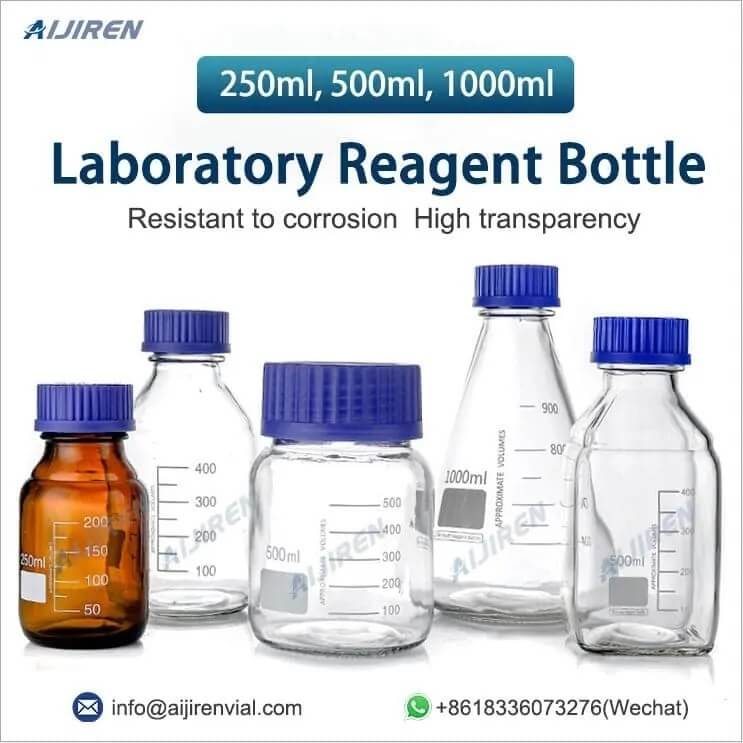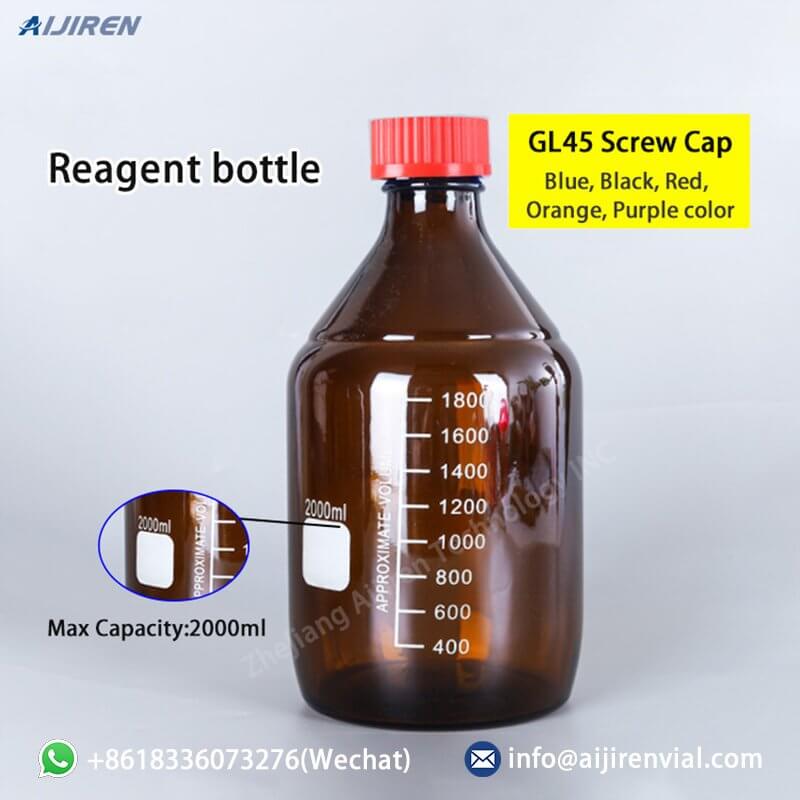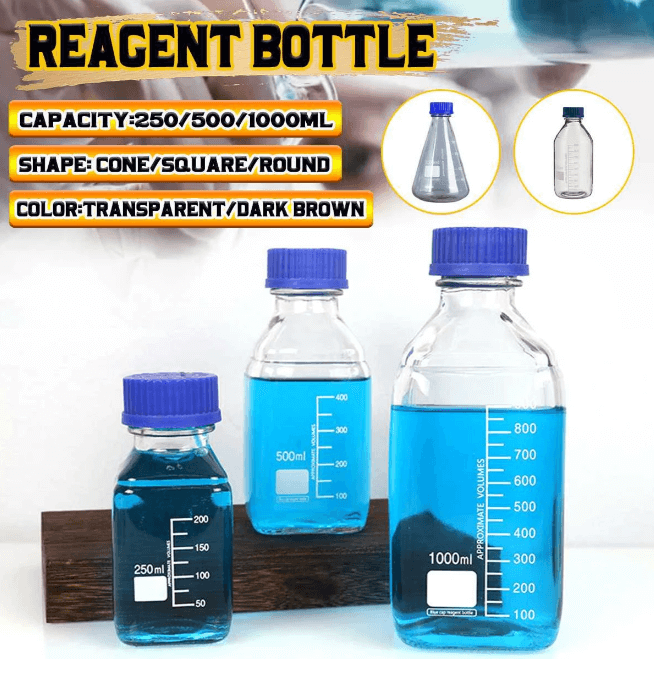Do You Know the Functions of Reagent Bottles?
Reagent bottles, also known as media bottles or graduated bottles, are containers made of glass, plastic, borosilicate, or related substances, and topped by special caps or stoppers. They are intended to contain chemicals in liquid or powder form for laboratories and are stored in cabinets or on shelves. The shape of the reagent bottle is mainly divided into a narrow mouth and a wide mouth.
Since reagent bottles are only used for normal temperature storage reagents, they are usually made of sodium calcium plain glass. In order to ensure a certain strength, the bottle wall is generally thicker. The reagent bottle is divided into a narrow mouth or wide mouth, clear or amber, and with a stopper or without a stopper. Among them, glass stoppers, no matter small mouths, or wide mouths, should have inside ground sand processing craft. The specifications of reagent bottles are expressed in volume size, small to 30mL, 60mL, ranging from thousands to tens of thousands of ml.

What are the features of reagent bottles?
1. Reagent bottles are made of medical-grade polypropylene PP or high-density polyethylene HDPE. PP material reagent bottles can withstand high temperatures and pressure.
2. Reagent bottles are durable without biological toxicity, acid, alkali, and alcohol.
3. Reagent bottles have a professional leak-proof design with no inner cover and inner pad. Reagent bottles are easy to leak-proof, transport, and store.
4. Both glass and plastic materials of reagent bottles are available in brown and transparent colors.
5. Reagent bottles have two options disinfection and non-sterilization.
6. Reagent bottles are available in various specifications of 125ml and 500ml.
7. Reagent bottles have good dielectric properties, and good high-frequency insulation properties, which are not affected by humidity.
8. However, reagent bottles will become brittle at low temperatures without resistance to wear and age.

What are the functions of reagent bottles?

Because the neck area of the narrow mouth reagent bottle is small, the stuff held in it is not easy to spill out. Narrow mouth reagent bottles can avoid the volatilization of liquid reagents. A narrow mouth reagent bottle is more suitable for holding liquid reagents. At the same time, a wide-mouth reagent bottle is much more convenient to hold solids due to the wide mouth. It is much easy for us to pick solid reagents out of the wide-mouth reagent bottles.
Although the narrow mouth reagent bottle is good, there are many points to pay attention to when using it. There is no way to heat the narrow mouth reagent bottle. The liquid in the narrow mouth reagent bottle is easy to be contaminated and deteriorated. Be careful when taking the liquid out of the narrow-mouth reagent bottle. When pouring the liquid, the label of the reagent bottle should face the palm of the hand, otherwise, the label will be easily corroded.
If the alkaline liquid is stored in the reagent bottle, only a rubber stopper can be used. In addition, the bottle stopper of the reagent bottle should be placed upside-down on the table to avoid contamination. Transparent reagent bottles are used to store general reagents, while brown reagent bottles are used to store reagents that need to be protected from light, such as nitric acid and silver nitrate.
Back to List
-
 下午4:09Weighing the Pros and Cons of PTFE/Silicone Septa
下午4:09Weighing the Pros and Cons of PTFE/Silicone Septa -
 下午4:05Decoding Vial Discard Guidelines: Ensuring Precision in Chromatography
下午4:05Decoding Vial Discard Guidelines: Ensuring Precision in Chromatography -
 下午5:01Navigating Micro Inserts for HPLC Vials: A Comprehensive Guide
下午5:01Navigating Micro Inserts for HPLC Vials: A Comprehensive Guide -
.jpg) 下午2:02Common faults and solutions of automatic samplers(2)
下午2:02Common faults and solutions of automatic samplers(2) -
 下午5:08Ensuring Sample Integrity: Navigating EPA Storage Vials Stability Guidelines
下午5:08Ensuring Sample Integrity: Navigating EPA Storage Vials Stability Guidelines

